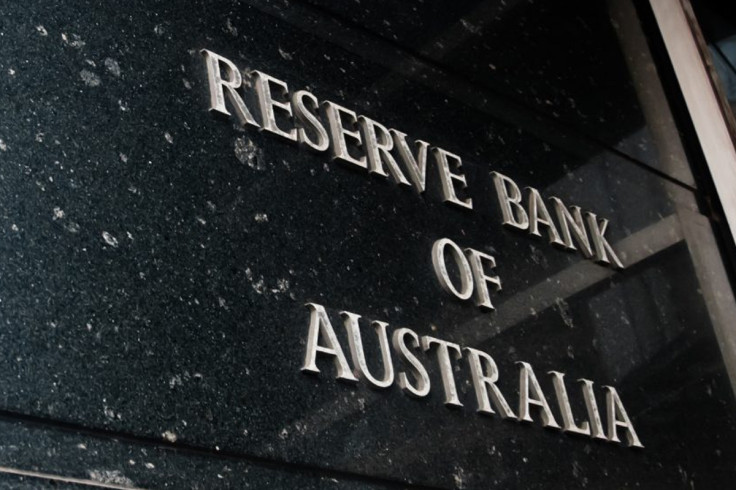RBA Cuts Interest Rate to 4.1%: What It Means for Inflation, Growth, and Consumers
The Australian dollar holds steady against the US dollar ahead of the RBA announcement

The Reserve Bank of Australia (RBA) has cut the official cash rate to 4.1%, a 25-basis-point reduction aimed at balancing inflation control with concerns over economic growth. This decision carries significant consequences for Australian consumers, businesses, and the currency.
Following its February policy meeting, the RBA confirmed the widely anticipated rate cut, citing the need to support economic stability amid ongoing challenges.
RBA's Economic Outlook
Despite a relatively strong labour market, both inflation and GDP growth have fallen short of expectations. The RBA notes that domestic financial conditions remain tight, with interest rates still above the neutral level.
The RBA noted the range of neutral rate estimates, some of which have been revised lower, and suggested that the availability of workers in the labour market may have been greater than previously thought. Despite the tight labour market, this could imply more unused capacity elsewhere in the economy than previously thought.
Moderating housing and service costs led to a lower-than-anticipated trimmed mean inflation rate for the fourth quarter.
New Economic Projections
The RBA's revised inflation and unemployment forecasts reflect the impact of lower household spending and increased public sector demand. Key projections include:
- Consumer Price Index (CPI): 2.4% in June 2025, 3.2% in June 2026, and 2.7% in June 2027.
- Trimmed Mean Inflation: 2.7% in June 2025, 2.7% in June 2026, and 2.7% in June 2027.
- GDP Growth: 2.0% in June 2025, 2.3% in June 2026, and 2.2% in June 2027.
- Unemployment Rate: 4.2% in June 2025, 4.2% in June 2026, and 4.2% in June 2027.
- Wage Growth: 3.4% in June 2025, 3.2% in June 2026, and 3.1% in June 2027.
Following the key economic projections, it's crucial to understand the underlying assumptions. These forecasts are based on the technical assumption that the cash rate will be 4.0% in June 2025, 3.6% in December 2025, and 3.4% in June 2026.
The RBA's Balancing Act: Inflation And Stimulus
Although underlying inflation shows signs of slowing, the RBA emphasised the ongoing economic uncertainties. Australia's central bank intended to return inflation to the 2–3% target range. The board expressed increased confidence in inflation's trajectory toward the centre of the target band while noting that upside risks remain a concern.
'If monetary policy is eased too much too soon, disinflation could stall, and inflation would settle above the midpoint of the target range,' Forecasts published on 18th February noted. While private demand has weakened and wage pressures have subsided, the RBA hesitates to loosen monetary policy further.
RBA cuts interest rates to 4.1%—the first reduction since the pandemic's early days.
— Ticker (@tickercotweets) February 18, 2025
A $750,000 loan holder could see monthly repayments drop by $115 if the bank lowers its mortgage rate accordingly.#ratecut #markets #Australia #ticker #tickernews pic.twitter.com/DtD2a18Z1i
'The Board's assessment is that monetary policy has been restrictive and will remain so after this reduction in the cash rate. Some of the upside risks to inflation appear to have eased and there are signs that disinflation might be occurring a little more quickly than earlier expected,' the Reserve Bank Board said in a statement.
The RBA will remain data-dependent and responsive to changing risk assessments as they shape future monetary policy.
RBA Rate Cut: What It Means For The Aussie Dollar
The Australian dollar could face selling pressure if the RBA proceeds with the anticipated 25 basis point rate reduction. How far the AUD falls depends on market sentiment. A surprise 50 bps cut or forward guidance suggesting more cuts to come would likely be perceived as very harmful for the Australian dollar.
On the other hand, if the RBA suggests a slower pace of rate cuts, the AUD could strengthen, as markets would perceive this as a 'hawkish cut.' Following the announcement, RBA Governor Michele Bullock will hold a press conference and likely need to provide significant justification if the decision deviates from market expectations.
A Currency Analyst's View
'The AUD/USD pair peaked at 0.6373 ahead of the announcement, its highest since mid-December,' says Valeria Bednarik, Chief Analyst at FXStreet. 'The pair maintains its technically bullish stance amid broad US Dollar (USD) weakness. The Greenback trades on the back foot ever since financial markets understood US President Donald Trump's fiscal measures pushed the Federal Reserve (Fed) into the hawkish path.'
'In fact, uncertainty over what US tariffs may mean to the Australian economy will likely be part of the RBA's announcement. Technically speaking, the AUD/USD pair has scope to extend its advance towards the 0.6470 region, where the pair presents multiple intraday highs and lows from the last few months,' Bednarik added.
'To reach such an altitude, the pair first needs to overcome the aforementioned intraday high, which is the immediate resistance level. Interim resistance comes next at 0.6430. A dovish outcome could push the pair through the 0.6300 threshold, with additional slides exposing the 0.6230 price zone.'
© Copyright IBTimes 2025. All rights reserved.






















